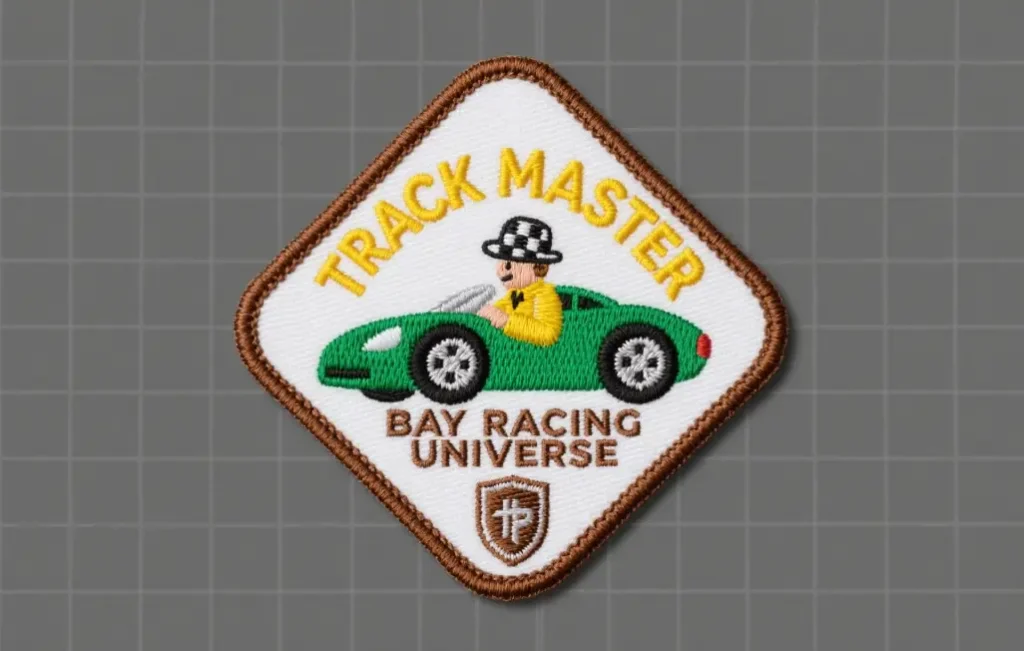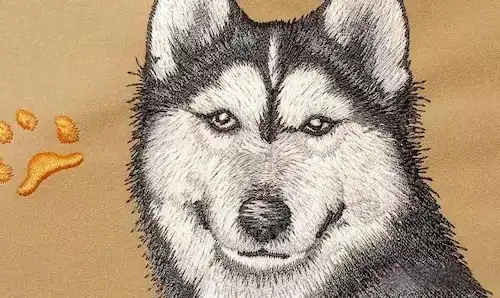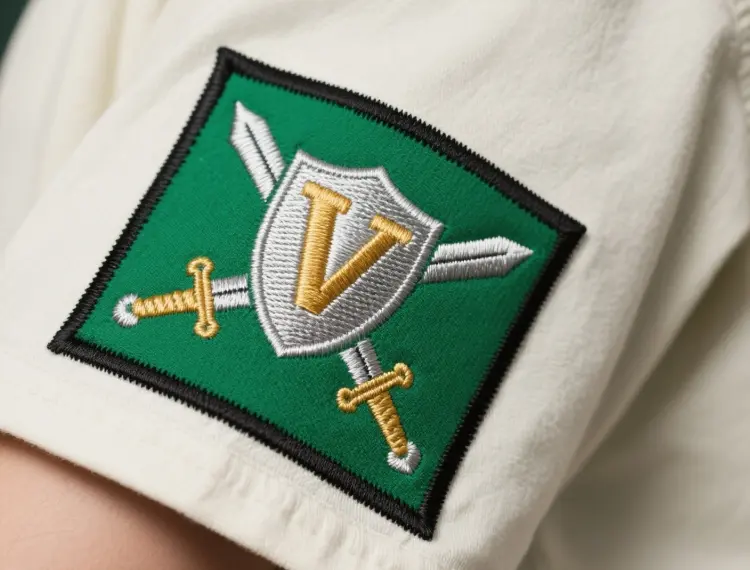Custom sewing patch is an art form of making patterns or words on fabrics through embroidery technology, which has a long history and rich cultural connotation. From the practical function in ancient times to the artistic expression in modern times, custom-stitched patches have gone through thousands of years of development and evolution, and become an important cultural symbol in the history of human civilization. We will systematically sort out the historical development of custom-stitched patches, explore their technological evolution, cultural significance and modern application, and introduce a complete historical picture of “patch civilization”.

Origins of the art of embroidery
Primitive Stitching in Prehistoric Times
The origins of the art of embroidery can be traced back to ancient times, when humans began to use tools and make clothing. Archaeologists have discovered well-preserved bone needles at the Xiaogushan site in Liaoning, which are about 30,000 to 45,000 years old. These primitive tools laid the foundation for later sewing and embroidery techniques.
In the early days of human civilization, people used tattoos, tattooed faces and tattoo-painted clothing to beautify their lives. As society developed, people began to use thread to sew patterns onto clothing, thus creating the original art form of embroidery. Since traditional embroidery was mostly done by women, it is often referred to as “women’s embroidery”.
Earliest Embroidery Techniques
Some of the earliest basic techniques or stitches used in embroidery were chain stitch, buttonhole or blanket stitch, continuous stitch, satin stitch and cross stitch. These stitches are still the basic techniques of hand embroidery today. The central tool of embroidery, the needle, has long been a necessity for sewing, dating back to ancient times.

Historical Development of Chinese Embroidery
Embroidery in the Ancient Period
The origin of Chinese embroidery is very early. According to the legend, “Shun ordered Yu to embroider with five-color embroidery”, which indicates that embroidery techniques were already used in China as early as the 23rd century BC during the Shun-Yu period. Embroidery techniques were further developed during the Xia, Shang and Zhou Dynasties and the Qin and Han Dynasties.
Embroideries can often be seen from early excavated textiles. Early embroidery relics show that: the embroidery of the Zhou Dynasty was still simple and rough; the Warring States period gradually became neat and exquisite. During the Spring and Autumn and Warring States Periods, embroidery and brocade technology made a major breakthrough, and the upper social stratum was honored with “clothes embroidered with literature.” In 1972, three types of Han Dynasty embroidery, namely Xinqi embroidery, Yiyun embroidery and Longevity embroidery, were unearthed from the No. 1 Han Tomb in Mawangdui, Changsha, Hunan Province, which demonstrated the high level of achievement of the art of embroidery in the Han Dynasty.
Embroidery Development in Tang and Song Dynasties
The Tang Dynasty was an important period in the development of Chinese embroidery art, and embroidered Buddha statues developed into works of art that could be appreciated independently. During this period, embroidery was not only used for clothing decoration, but also became a form of artistic creation, reflecting the prosperity of the society and cultural diversity at that time.
During the Song Dynasty, the trend of honoring embroidered garments was widely popular among the folk, which also contributed to the development of Chinese silk embroidery craft. During the Song Dynasty, embroidery works were divided into two categories: practical embroidery and appreciative embroidery, while Chinese calligraphy and painting had a profound influence on embroidery. Song Dynasty embroidery was famous for its fine workmanship and rich subject matter, which laid the foundation for the development of embroidery art in later generations.
The early 10th century to the 14th century A.D. is China’s history of Liao, Song, Xixia, Jin and other multi-ethnic regimes side by side to the gradual unification of an important period of time, this period of embroidery skills in the exchange of fusion in the presentation of the new development trend. Embroidery is characterized by solemnity and richness, needlework diversity, reflecting the integration of multi-ethnic culture and innovation.
Embroidery Prosperity in the Ming and Qing Dynasties
During the Ming Dynasty, embroidery was divided into two systems: southern and northern, with southern embroidery represented by Suzhou embroidery and northern embroidery dominated by Beijing embroidery. The southern embroidery was fine and neat, while the northern embroidery was rough and bold, each with its own characteristics. During this period, the embroidery technology is more mature, the subject matter is richer, and the artistic style is more diversified.
Qing Dynasty embroidery is very developed, folk embroidery workshop is very much, Xiang embroidery, Canton embroidery, Shu embroidery and Su embroidery and known as the four famous embroidery, selling well at home and abroad. The prosperity of embroidery in the Qing Dynasty was not only reflected in the quantity, but also in the quality. Most of the embroideries used by the imperial court were drawn by the painters of the palace manufacturing office Ruyi Hall, and then sent to the three embroidery workshops under the jurisdiction of the Jiangnan Weavers after approval, and the embroideries were very neat and exquisite.
Ming and Qing dynasties, the feudal dynasty’s court embroidery is very large. Folk embroidery has been further developed, has produced Su embroidery, Guangdong embroidery, Long embroidery, Hunan embroidery, Shu embroidery, known as the “five famous embroidery”. Each of these five famous embroideries has its own characteristics, which together constitute the treasure of Chinese embroidery art.

Exchange and Development of Global Embroidery Culture
Embroidery Traditions in Different Regions of the World
In addition to China, ancient cultures in other parts of the world also used embroidery techniques. Ancient civilizations such as Ancient Egypt, Greece, Persia, Rome, India, the Mediterranean and South America all used embroidery techniques to decorate clothing and objects. Embroidery techniques appeared in Egypt in 3400 BC, in China and Persia in 500 BC, and in the Greek and Roman periods in 200 BC.
Diffusion and Integration of Embroidery Techniques
With the expansion of trade and cultural exchanges, embroidery techniques spread and fused globally. Embroidery styles and techniques from different regions interacted with each other, forming a rich and diverse tradition of embroidery art. Especially with the promotion of trade routes such as the Silk Road, embroidery techniques have crossed regional and cultural boundaries and become a common cultural treasure of mankind.
The Evolution of the Modern Custom Sewn Patch
Technological Innovations and Material Evolution
With the advancement of technology, modern custom sewing patches have undergone significant technological innovations. From traditional hand embroidery to modern computerized embroidery machines, and from natural to synthetic materials, the techniques and materials used in the production of custom sewn patches have changed dramatically.
Modern custom embroidered patches are usually works of art made using embroidery machines, and they are often made using cotton twill and different colored threads to create designs or logos that convey a message related to a specific theme or event. This modern production method has greatly improved efficiency and accuracy, making custom stitched patches more popular and diverse.
Modern application scenarios
Modern custom sewn patches have a wide range of application scenarios. They can be used on all kinds of items such as clothing, accessories, home furnishings, etc., as decoration, logo or artistic expression. In the modern fashion industry, custom sewn patches have become a popular element and are widely used in various clothing designs.
For example, the customized patches on Letterman jackets are a typical example, which are often used to express personal identity, hobbies or affiliation.
Preservation and Inheritance of Embroidery Art
With the development of industrialization and modernization, traditional embroidery skills are at risk of being lost. In order to protect this valuable cultural heritage, many countries and regions have taken various measures, such as setting up embroidery museums, organizing embroidery exhibitions, and conducting training in embroidery techniques, to promote the protection and inheritance of embroidery art.
As a national intangible cultural heritage, Chinese embroidery has received strong support and protection from national and local governments. Many embroidery techniques have been included in the list of intangible cultural heritage, and embroidery artists have been respected and recognized by the society. At the same time, the art of embroidery has been integrated into modern design and fashion, giving it new vitality and vigor.

The Cultural Significance of Custom Sewn Patches
Symbol of social status
In ancient times, embroidery was not only a decoration but also a symbol of social status. The upper class demonstrated their status and wealth through beautifully embroidered clothing. For example, during the Spring and Autumn Period and the Warring States Period, the upper class of the society was honored with “clothes embroidered with literature”. This tradition was continued and developed in the subsequent dynasties.
Symbol of cultural identity
Embroidery art is an important symbol of cultural identity. Different ethnic groups and regions have their own unique embroidery styles and patterns, which reflect the local natural environment, historical traditions, religious beliefs and aesthetic concepts. Through embroidery, people express their identity and love for their own nation and region.
Artistic value and collection value
Embroidery art has high artistic value and collection value. Fine embroidery works not only have practical functions, but also have high ornamental value and collection value. Many ancient embroidery works are treasured in museums and become precious cultural heritage. Modern high-end customized sewing patches also have high collection value due to their unique artistry and scarcity.
As an ancient and beautiful art form, custom sewing patches have undergone thousands of years of development and evolution, from practical function to artistic expression, from traditional craft to modern design, demonstrating the extraordinary achievements of human wisdom and creativity. From ancient Chinese embroidery techniques to embroidery traditions around the globe, from traditional handmade to modern digital production, the history of custom sewing patches is a history of the progress of human civilization.
In contemporary society, custom sewing patches are both a carrier of traditional culture and an element of modern design, a way of artistic expression and a symbol of identity. With the progress of technology and social development, custom sewing patches will continue to evolve and innovate, bringing more beauty and cultural value to people’s lives.
It is the responsibility and mission of the present generation to protect and inherit the art of embroidery and promote its innovation and development. Let us work together to make this valuable cultural heritage shine more brilliantly in the new era.


